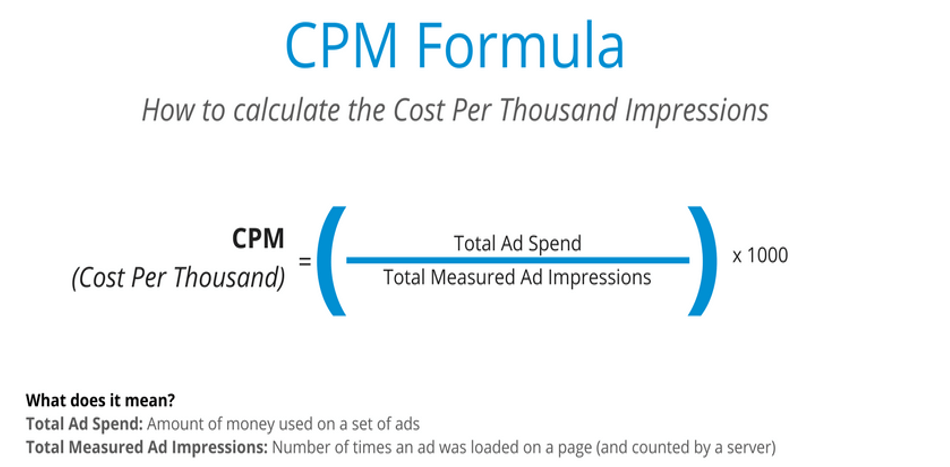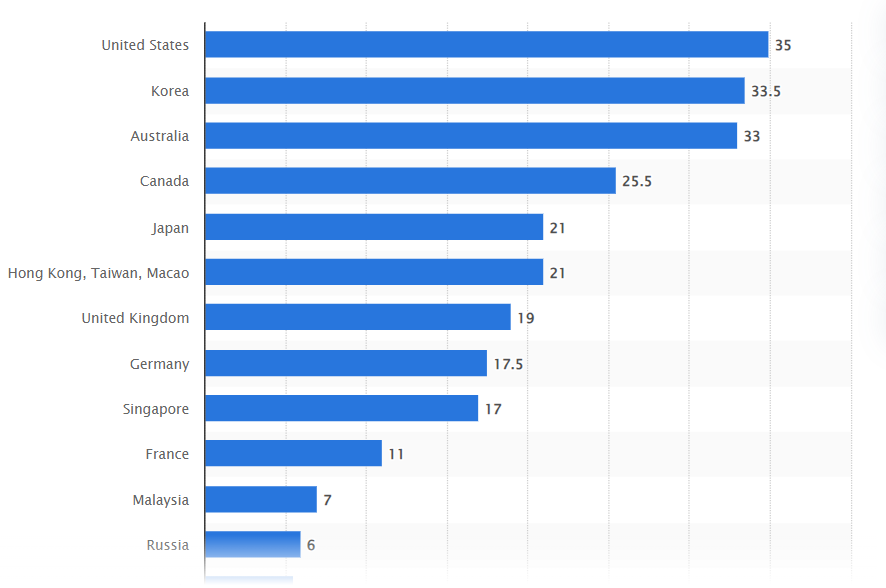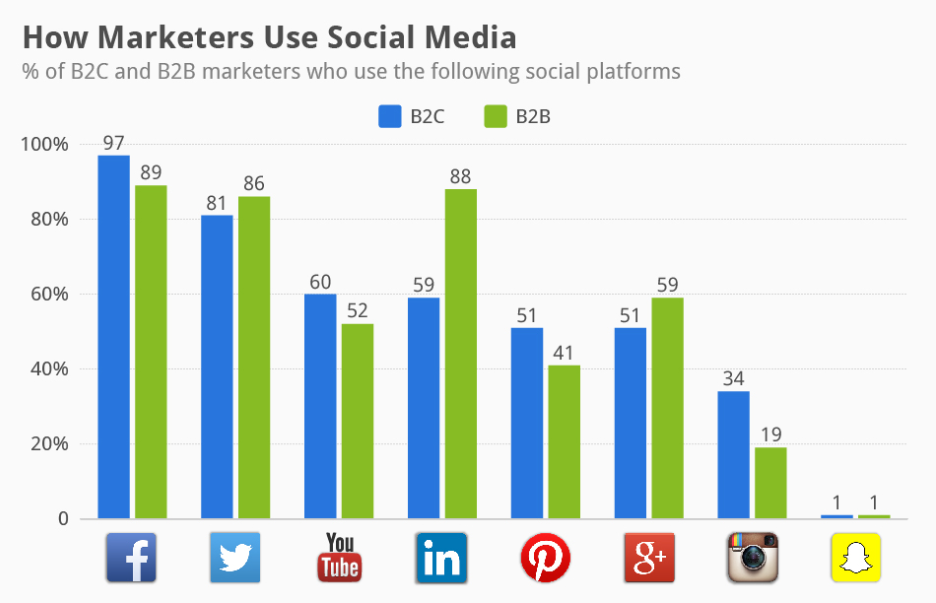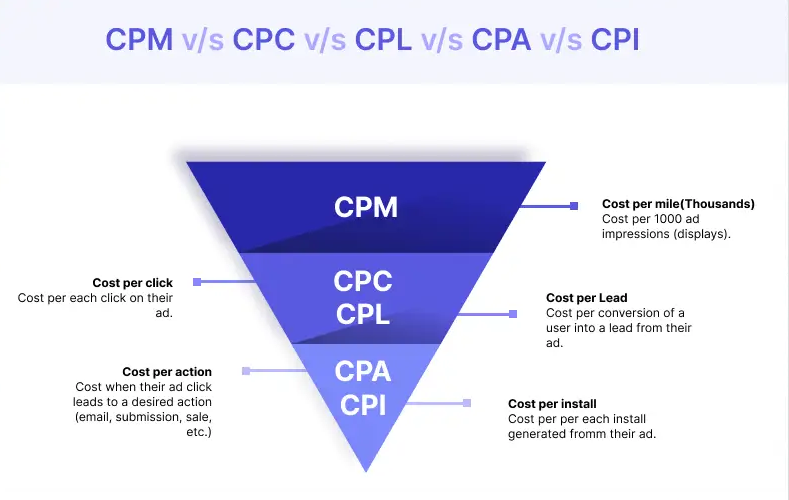CPM in Marketing: What It Is and How To Use This Tool To Generate More Leads
In the digital world, brands “fight” for the attention of a large audience to get their services or goods promoted and make their brand outstanding. Here, they “fight” for impressions. The impression has become a unit of measure counted when an advertisement is viewed in an application or website (often among other emails in people’s inboxes).
A top-of-the-funnel metric for ad publishers is CPM. Additionally, when market specialists aim to test an offer via email marketing, they find the CPM email marketing approach an affordable solution.
This article delves into CMP marketing and its meaning. We’ll show you how it affects business lead generation and discuss key strategies to help you generate more leads.
What Is CPM in Digital Marketing?
What does CPM stand for in marketing? CPM means “cost per mille” (where the Latin “mille” is a thousand). CPM marketing is used as an advertising metric to calculate the cost of every 1,000 impressions a single advertisement receives online. Simply put, an advertiser pays a fixed price for a thousand views of their ad on a webpage regardless of potential clients‘ future actions (clicking or skipping the link).
CPM is usually used to:
- Promote new products
- Attract new clients
- Nurture an interest in a brand
- Encourage successful conversion
Advertisers or lead generation specialists often use this tool when announcing sales, special deals, or loyalty programs.
How Is CPM Calculated?
To measure CPM, advertisers usually divide the total cost of the campaign by the number of impressions. The result is multiplied by 1,000.

Basically, it is an automated lead generation solution that is possible due to AI tools and machine analysis. If used effectively, CPM improves the marketing strategies of a business and optimizes lead-generation funnels.
So, what is lead generation in digital marketing? The process refers to attracting new prospects to a business, kindling a spark, and nurturing their interest to further turn them into new clients with the help of social media platforms. Therefore, CPM is a helpful metric to estimate advertising efficiency (proving that the intended audience has been reached) and generate more leads.
Lead Generation Funnel
When deciding to utilize CPM marketing, a business or an advertiser has to consider a few factors impacting its rate and efficiency:
- First and foremost, you should consider the supply and demand proportion. It means that competing with other suppliers in the same marketplace, they would pay more for advertising tier products and services.
- Second, seasonality dictates the rules and decides the rate. People are used to Black Fridays and big summer sales and looking forward to seeing different offers. During the holiday season, the CPM rate increases due to the competition between brands to boost their “holiday-related” sales.
- Third, each social media platform has a different CPM rate. It relies on the platform’s popularity among certain age groups and the number of active users. For instance, Facebook’s cost per impression equals $14,40. That is the price for 1,000 views an ad receives.
- Fourth, geography also plays a key role in advertisement pricing, especially considering outbound lead generation. The research proves that placing an ad on social media for USA viewers costs more than the same for Malaysians, for example.

Source: Statista
- Lastly, the quality of the ad directly affects its price and CPM rate. The more dynamic, creative, innovative, and concise an ad is, the more memorable it will appear for the viewers and stick in their heads.
How To Boost Lead Generation Funnels Using CPM Effectively
There are a few key strategies for a business to follow so that their CPM in marketing gets lower but more successful.
1. Define Your Target Audience
Businesses need to know their ideal customers to promote their products or services to the “right” people. Before launching any advertising campaigns, they need to “target” it. Simply put, lead generation specialists need to carry on research on demographics, interests, online behavior, and affordability to collect credible data they can use to create an ideal customer profile and build their future advertising strategy. Afterward, an advertisement is tailored and customized to meet potential customers’ needs.
In the long run, this CPM marketing strategy will increase the chance of internet users paying attention to this online ad and probably converting into clients.
2. Choose the Appropriate Platform for Advertising
Digital marketing allows for simplified targeting of new customers as the audience is already divided by their interests and age groups. For example, Instagram and TikTok are more effective for targeting young people, while Facebook could be more popular among middle-aged people. LinkedIn, in its turn, is an appropriate platform for B2B marketing. So, based on your target audience, go with the most suitable platform for your target audience.

3. Improve the Visuals and Optimize Ad Messages
It is not a surprise that an average Internet user’s attention span gets shorter each year. Infinite scrolling turns all media into a colorful kaleidoscope where only the most striking and appealing images catch a user’s eye. Thus, creating visually attractive messages (preferably with a hook) in combat for customers’ attention is paramount. Engaging pictures and clear call-to-actions can result in higher lead generation on your landing pages or generate more leads for your website.
4. Monitor and Analyze the Performance of an Advertising Campaign
When regularly tracked, CPM is useful for receiving analytics for viewer engagement. Businesses need to spot underperforming campaigns or unsuccessful targeting options to fix them in the future. On the large, the data received and analyzed boosts the cost-effectiveness of advertising. For instance, Google Analytics offers detailed insights into the performance of ads and viewers’ interactions with those ads.
Collecting and analyzing the data does wonders for businesses as it helps to reach sensible decisions on reducing email marketing costs when promoting themselves.
How To Generate More Leads
1. Focus on Returning Clients
When the sales rates surge and the company seems to be riding on the wave of success exploring new markets, it is never a bad idea to forget about returning clients. Marketers suggest keeping in touch with that valuable category of clients using outbound lead generation. Why is it necessary? Brand loyalty relies more on this type of conversion, and the CPM model comes in handy, showing that investing in retargeting returning clients is more affordable and has a more long-lasting effect.
2. Create an Email Offer
Due to the rapid and profound advancement of social media marketing that greatly bases on social networks, many people have abandoned the idea of email marketing, calling it a thing of the past. However, if the business has partners in its field, this type of advertising can turn out successful and generate more leads after making a deal to swap offers through email with already trustworthy representatives. Just make sure that you know the best time for sending your email campaign. As specified in the recent research by Belkins, it’s more effective to send emails between 7 AM and 11 AM as those letters have the highest reply rates.
Additionally, incorporating a custom QR Code created by any reliable QR Code generator into your email campaigns can inject a modern touch, enabling recipients to access exclusive content or promotions seamlessly and thus revitalizing the effectiveness of email marketing strategies.
3. Try Other Bidding Strategies and Advertising Models
For digital marketing, CPM is one of many effective tools for advertising. In some cases, CPC (cost per click) or CPA (cost per acquisition) comes in handy to target a particular audience. For example, the CPC model helps track interactions with an ad. Trying out various advertising models helps to identify which strategy is the most suitable for a particular product or service being promoted. Moreover, testing different ways of lead generation lets us find a more cost-effective way to interact with a target audience and increase sales at the right time.

Source: Mailmodo
4. Optimize, Improve, and Refine Ads
The one-size-fits-all rule does not apply to advertising. The greater the control over ad experience, the higher the conversion rates. Therefore, businesses need to analyze data regularly, change the settings of the ads that are underperforming, add variations, and refine their targeting to get the most out of their ad campaigns.
Wrapping Up
Using CPM effectively in digital marketing can become a powerful tool to generate more leads. However, defining a target audience, choosing the most appropriate advertising channels, and placing an ad is only the tip of the iceberg for businesses and brands looking to drive their business growth via online promotion.
Constant and regular refinement of ad settings, monitoring campaign performance, and trying out diverse advertising models maximize their lead generation capabilities.
Want to help contribute to future articles? Have data-backed and tactical advice to share? I’d love to hear from you!
We have over 60,000 monthly readers that would love to see it! Contact us and let's discuss your ideas!